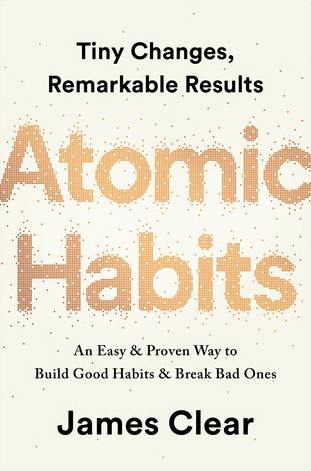Crafting a stable course for business advancement and sustainability (Part 1)
Introduction
Until recent past, the concept of building enduring business institutions did not seem ingrained in many Nigerian entrepreneurs. It was archetypal of most entrepreneurs to found and run their businesses –even the ones that later endured – first with sustenance considerations, and then, for pride and social mileage derived from being “successful” businessmen.
Was vision lacking? No! Just that the vision was somewhat limited to the immediate and the short-term. Truth be told, a vision so restricted rarely builds a lasting, clock-building business. A vision premised on gratification ego and personal accumulation of wealth hardly endures.
In their book – Built to Last, Jim Collins and Jerry Porras encapsulate the clock-building concept of businesses in a very intelligent way. They differentiate between having a great idea upon which a business thrives at a moment, and building a company that can prosper far beyond the presence of any single leader, and through multiple product/service life cycles.
The authors further propound that searching for a single great idea on which to build success is time-telling while building an organization that can generate many great ideas over a long period of time is clock-building. Enduring greatness requires clock-building. They try to relegate the idea that having a great product and a great leader (or great leaders) is strategic advantage to any business.
For the purpose of this piece, we take strategic advantage in this context as giving the business an edge to thrive for – and endure – generations.
To thrive for – and endure – generations would mean that such a business has entrenched in their organisations and systems life-renewing mechanisms. Such mechanisms are analogous to finding answers to questions such as:
- What type of enduring business do we want to build?
- What systems should we construct that will give us the kind of business we envision?
- What processes can we create that will give us good leaders after we’re dead and long gone?
Ultimately, such businesses defy the parameters imposed by traditional business life cycle.
The Traditional Business Life Cycle
Students and enthusiasts of business management are well familiar with the growth stages of a business, typically called The Business Life Cycle.
Business life cycle is the progression of a business in phases over time. All businesses would hypothetically pass through all the phases, but not all will or need to.
The cycle is typically divided into 5 phases.
| Phase | Characterised by |
| Launch | · New product/service is launched.
· Sales low but growing |
| Growth | · Sales growth
· Positive cash flow |
| Shake-out | · Sales continue to grow but at a slower rate
· Cash flow increases |
| Maturity | · Sales decrease slowly
· Profit margin gets thinner · Business calls for growth renewal |
| Decline | · Sales, profit, and cash flow all decline
· Business loses their competitive advantage and finally exits the market. |
Crafting a stable course that defies business decline
During maturity phase, strategic businesses perennially renew by rejuvenating themselves, improving processes, and investing in new technologies and emerging markets.
This perennial renewal, oiled by built-in processes and systems is what determines the ability of a business to – from time to time, and from generation to generation – reposition themselves in their industries and refresh their growth in the marketplace. They – time after time – question the fundamentals of their business model; reconsider many things, and reject, refine, reshape or rebuild.
Right from the start of the business, but more so as it nears its maturity stage, the systems and processes for continually generating great ideas must be integrated into the engine of the business. This is what we call clock-building machinery.
Clock-building and the business leader
But does it really it take a great leader to build a clock-building machinery? In our opinion, it does take one. Not a great leader in the one who gravitates towards ego and self gratification, but a clock-building leader who understands and imbibes the necessity of sacrifices in leadership. A leader who’s forward-thinking, process-oriented and gracious enough to create a system –starting from her – that makes leaders within the organisation (now and in the future) subject self to the collective beliefs and value system of the business. Humble leaders are great because they make their people feel great and empowered when they’re around them. And where you have multiples of leaders and people within an organisation who feel empowered and emotionally committed, issue of good succession becomes easier – from one generation to another.
More than the leader: Continuous organisational advancement requires dynamic strategies
Before we delve into the necessity for dynamic strategies, the following statistics are worthy of note.
- 74% of executives who don’t believe that their company’s transformative strategies will succeed (McKinsey)
- Only 2% of business leaders are confident that they will achieve 80–100% of their strategic objectives. (Bridges Business Consulting)
- 67% of well-formulated strategies failed due to poor execution. (Havard Business Review)
- Only 41% think their companies provide sufficiently skilled personnel to implement high priority strategic initiatives. (Economist)
- 30% of companies don’t believe that their strategy was an effective business roadmap. (Phillips Consulting)
- Only 22% of employees feel that leaders have a clear direction for the organization. (Gallup)
- In a survey of managers in more than 300 organizations, only 10% of respondents believed that all of their organization’s strategic priorities had the funds, people, and management support needed to succeed. (MIT Sloan)
The above statistics suggest that in many organisations, there are as much complexities around strategy development as around implementation. Much of this complexity may actually be around the traditional mentality of calendarizing the strategy process and the output.
In today’s heavily changing business world, we consider it appropriate for businesses to look more in the direction of dynamic strategies and capabilities – such that enable a business to quickly adapt to changes. This involves building flexibility into both the strategic planning exercises and implementation processes.
As developed by David J. Teece – world-leading organizational economist and the Professor in Global Business, dynamic capabilities allow a business to “integrate, build, and reconfigure internal and external competencies to address rapidly changing environments”. The dynamic capability framework requires business leaders to modify core competencies so as to readily attend to market shifts. It stimulates continuous sensing of opportunities and threats, smartly seizing opportunities and careful juggling of assets to proactively take advantage of impending shifts.
For a business to effectively implement the dynamic capability framework, formal and informal strategic reviews must sync.
Informal strategic reviews?
Aside the calendarised strategic sessions, businesses need to deliberately and frequently engage people across the organisation at informal levels with strategic intent. It could be shocking the amount of valuable and timely data that would be gathered during these conversations.





